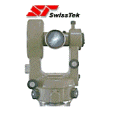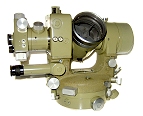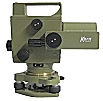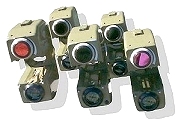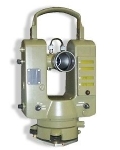 |
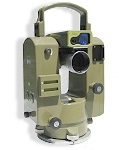
|
|
|
|
|
E2-EC Autocollimation Theodolite with 3-Point Center-Pivot Leveling Module
|
E2-ECA8 with standard 3-Point Center-Pivot Leveling Base and A8 Leica Disto™ visible Laser for fast distance acquisition |
|
|
|
|
Arguably the Kern E2 is the most accurate and stable electronic sub-second Theodolite ever built. These instruments are constructed like battle field tanks, with uncompromising mechanical stability, quality and standards. Due to their ruggedness and solid state design and without RAM or sotfware nor internal batteries to deal with, re-calibration and maintenance are kept to a minimum. Unfailing even under extreme use, they are without doubt one of the most cost-effective and best kept secrets in the optical tooling world.
|
DKM2-A DKM2-AE DKM2-AC DKM2-AM DKM2-AT
|
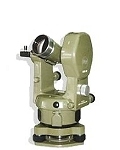 |
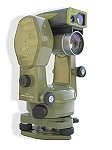
|
|
|
This previously standard Kern DKM2-AE was modified and converted into a tribrach model DKM2-AET by Swisstek Inc.
|
This DKM2-AECT one arc second Theodolite, mated with a A8 Leica Disto™, with visible Laser and Tilt Sensor, makes this combination a highly viable and accurate reflectorless Optical Tooling Tachymeter system. |
|
|
The Kern DKM2-A is a workhorse in many respects and is today's choice Theodolite for use in optical tooling and alignment applications. It is also heavily favored where a purely optical environment is required or desired and bulky electronic spatial measuring devices are rendered impractical. Furthermore, Optical Theodolites like the DKM2-A, have practically an infinite shelf life and will still be going strong long after all their electronic counterparts have lost their memories and succumbed to old age.
The Kern DKM2-A and its variants can be regarded as the most accurate and robust built 1" of arc optical theodolite ever. Available in several versions, including with preloaded vertical and horizontal axes systems which can be mounted in inclined or hanging positions.
The first generation DKM2-A theodolites, available only with an inverted telescope image, had the designation DKM2-A, where DKM stands for Doppel Kreis Mikrometer, meaning double circle or diagonally-read circle with micrometer. The numeral 2 stands for second order triangulation with the dashed A standing for automatic index. This type of telescope is sometimes also referred to as celestial or astronomical version.
The successive terrestrial version was named the DKM2-AE, with the added E standing for erect or upright telescope image. In later years, this was to become the standard model as all DKM2-A's were built with only upright telescope images, except for the DKM2-AC. Thus the E became redundant and was dropped from subsequent production runs.
Other official designations included the DKM2-AM and DKM2-AEM, a theodolite with built-in trunnion axis micrometer and capable of measuring an incline of up to 30"; the DKM2-AC with a built-in integral autocollimation beam splitter and the latest version, the DKM2-AT, where the T stands for tribrach, as in tribrach version. Up to this point, and except for some government specific contracts, all Kern DKM2-A models distinguished themselves with the compact and precise Kern cam leveling system, assuring a constant horizontal axis height of 173 mm.
Other semi-official designations included the DKM2-AEC, DKM2-AET, DKM2-AECT, DKM2-AL as in Laser and perhaps a few more.
|
